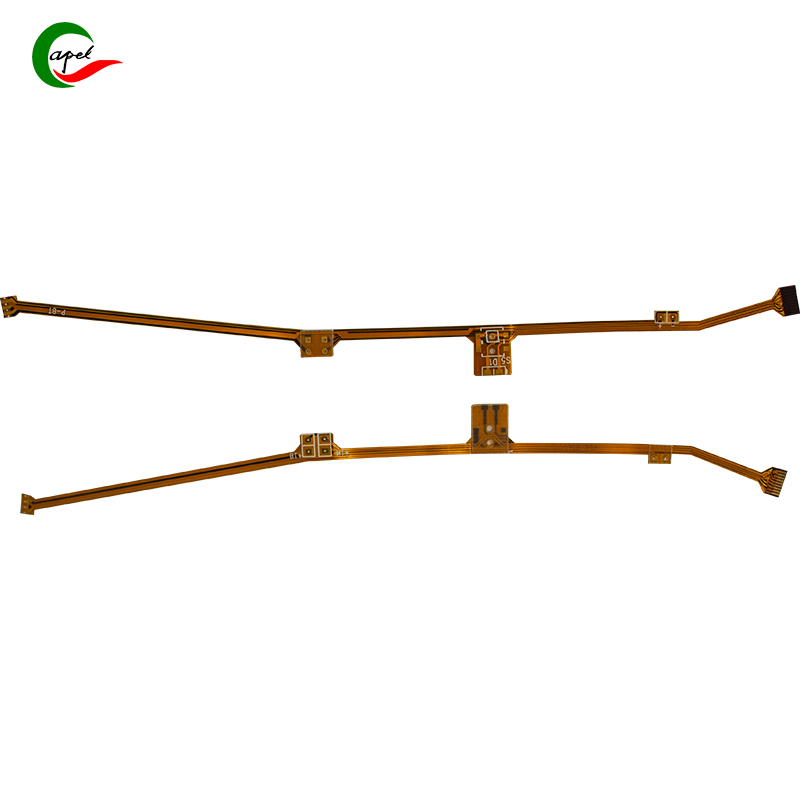Date: 2025-10-16
When we first started working on foldable display drivers, we quickly discovered that traditional PCB spacing rules simply don't hold up in flexible applications. The conventional 3W rule - where you maintain three times the trace width between adjacent traces - proved completely inadequate for signals that need to survive thousands of bend cycles.
The Physics of Flexible Circuit Bending
The fundamental issue comes down to material behavior under stress. During our testing, we observed that when a flexible PCB bends to a radius equal to twice its thickness, the actual spacing between traces can decrease by 10-20%. This isn't just theoretical - we measured this directly using high-speed cameras and precision electrical testing.
What makes this particularly challenging is that the polyimide substrate's dielectric properties change under strain. We recorded dielectric constant variations of 5-10% during dynamic bending, which significantly alters the electromagnetic coupling between adjacent traces.
Practical Spacing Guidelines from Real Projects
Through extensive testing across multiple product categories, we've developed these spacing guidelines:
For low-frequency control signals in applications like industrial sensors that bend infrequently, the traditional 3W rule still works reasonably well. However, in high-cycle applications like foldable phone hinges, we increase this to 4W to account for material creep and permanent deformation over time.
High-speed signals require much more conservative spacing. In 5G modules and high-speed interfaces, we use 5W spacing for occasional bending and 6-7W for frequently flexing applications. This extra margin has proven crucial in maintaining signal integrity throughout product lifespan.
Differential pairs need special consideration. We maintain tight 0.5W-1W spacing within the pair itself, but then provide generous 5W clearance to other signals. This approach has worked well in our USB4 and high-speed display interface implementations.
Beyond Basic Spacing: Additional Strategies
Spacing alone isn't a complete solution. We've found several complementary approaches essential:
Ground planning is critical. In multi-layer flex designs, we use continuous ground planes between signal layers. For single-layer constructions, we place ground traces between every 3-4 signal lines. This provides effective shielding without significantly impacting flexibility.
Routing discipline makes a measurable difference. We limit parallel runs of high-speed signals to 10mm maximum and use curved rather than angled bends. This reduces coupling while maintaining impedance control.
Material selection matters more than many designers realize. We specifically test substrates for dielectric stability under flexing and prefer materials with variation under 2%.
Validation and Iteration
We've learned that simulation alone isn't sufficient. Our process now includes rigorous post-flex testing using vector network analyzers after thousands of bend cycles. This real-world validation has helped us refine our spacing rules beyond what models suggest.
One particularly valuable lesson came from a robotic joint application where we initially used 5W spacing for high-speed signals. After 10,000 flex cycles, we observed crosstalk degradation that forced us to increase to 6W spacing. This experience taught us to build in additional margin for high-cycle applications.
Implementation Considerations
The most common mistakes we see include:
Applying rigid-board rules to flexible applications
Underestimating the impact of bending radius
Focusing only on initial performance rather than aged performance
Successful designs consider the entire product lifecycle and test under realistic conditions. The extra space allocated for proper spacing pays dividends in product reliability and customer satisfaction.
By adopting these practices, we've consistently achieved crosstalk performance better than -40dB even after extensive flex cycling. The approach has proven reliable across consumer electronics, medical devices, and industrial applications where flexible PCBs must maintain signal integrity through years of dynamic operation.
related link:
Capel manufacturing PCBs since 2009. Professional technology and high-precision Printed Circuit Boards involved in Medical, IOT, UAV, Aviation, Automotive, Aerospace, Industrial Control, Artificial Intelligence, Consumer Electronics etc..